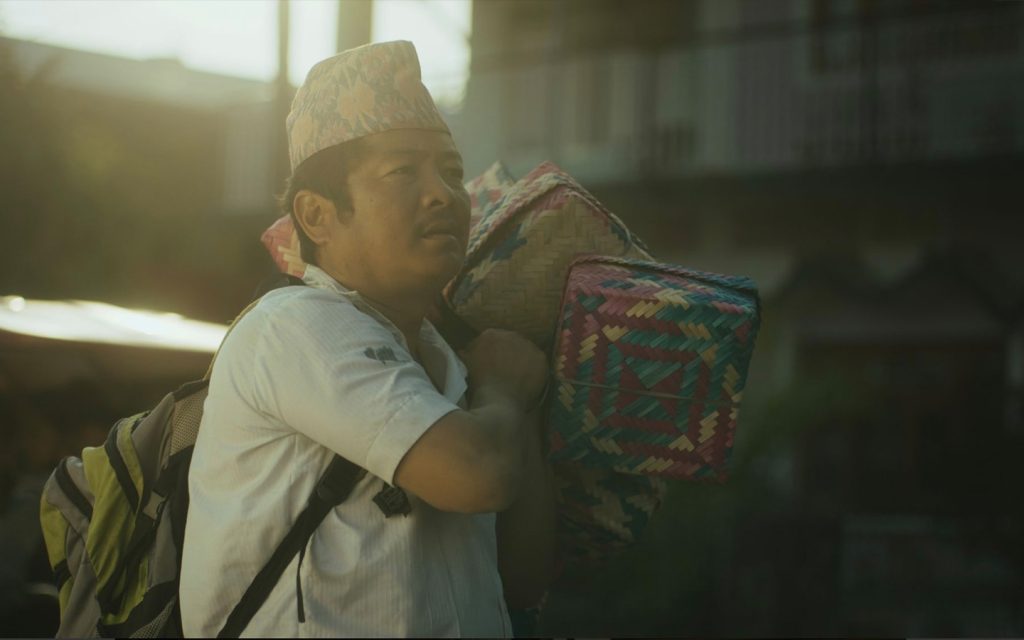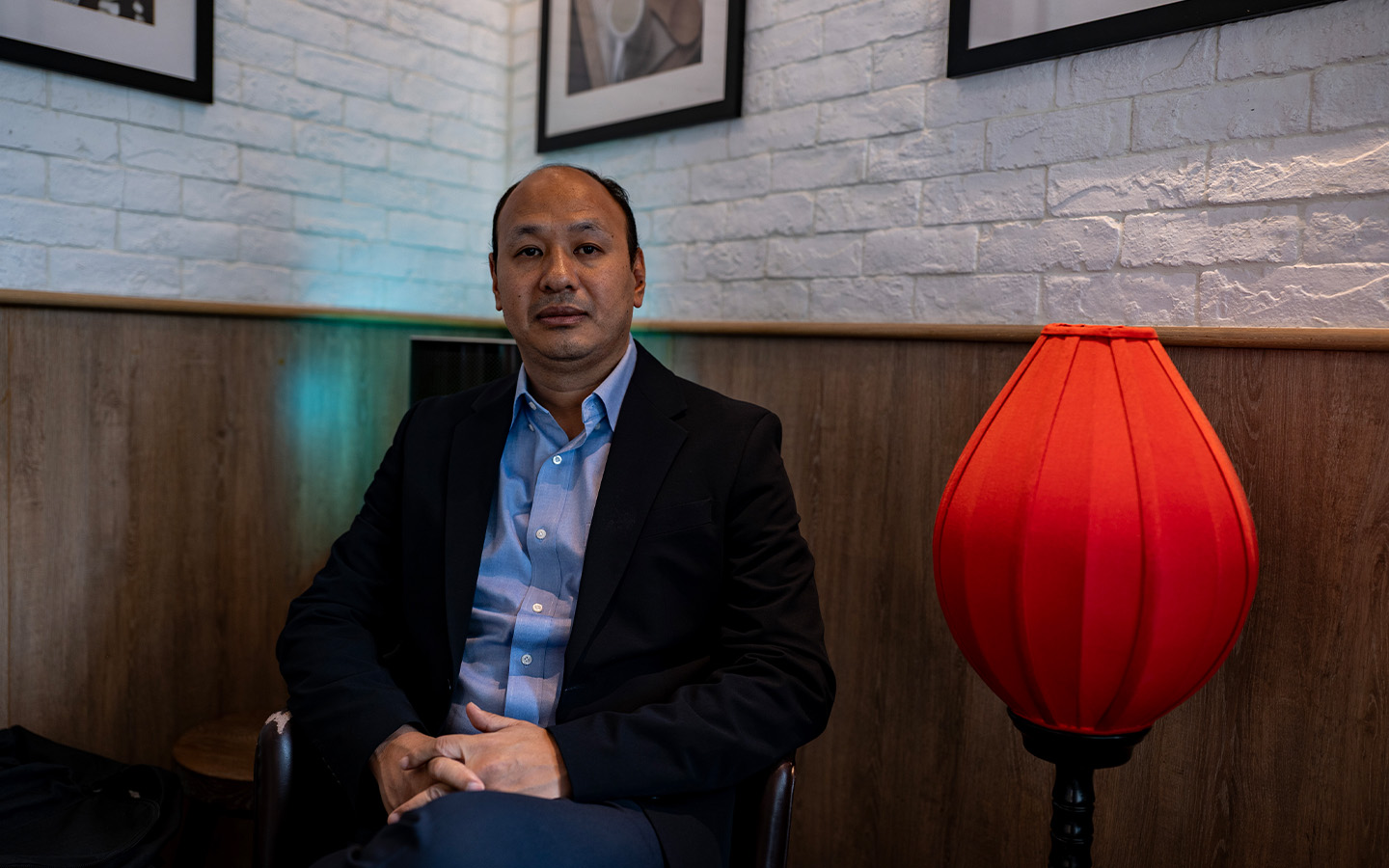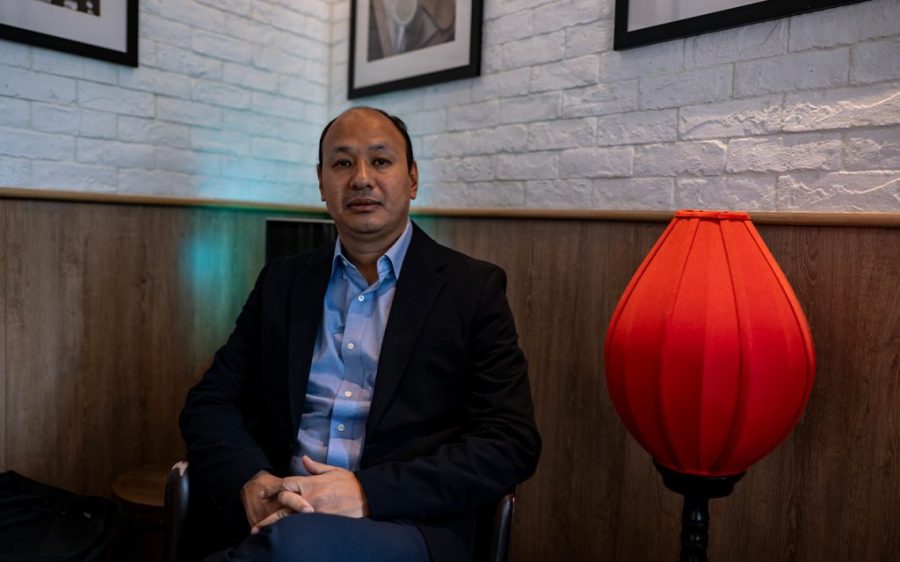Every year on 5 April, the Nepalese community in Hong Kong observe Purkha Divas or Nepalese Memorial Day to honour the Nepalese soldiers of the British Army who sacrificed themselves while serving in the city and abroad.
Known as the Gurkhas, these servicemen ended their more than seven decades of service in Hong Kong following the territory’s handover from the UK to mainland China in 1997. Despite this, many Nepalese Gurkhas, along with their families and descendents, continue to live in Hong Kong and contribute to the financial hub’s development.
Educator, community activist and film producer Amod Rai is among their ranks. Born and bred in Nepal, the 45-year old first arrived in Hong Kong in pre-handover 1997, retracing the steps of his Gurkha grandfather.
Rai quickly found his calling in education, working to empower ethnic minority students, first at local schools and now as an education service provider who offers online international qualifications to minority students who are unable to qualify for Hong Kong universities.
[See more: Ne Zha 2 ends its mainland run as the fifth highest grossing film in movie history]
The Nepalese educator is also heavily involved with the Gurkha Cemeteries Trust, an organisation that he helped to establish in 2006, in order to popularise the oft-neglected history of the servicemen, who were instrumental in safeguarding the city.
More recently, Rai made the leap into filmmaking, serving as the producer of A Road to a Village (2023), a Nepalese film by one of the country’s top directors, Nabin Subba.
Shot with a budget of just US$200,000, the community-funded film centres around the story of a family from the indigenous Rai tribe of Nepal’s east. Nepalese filmstar Dayahang Rai plays Maila, a basket weaver whose idyllic life with his wife and 7-year-old son, Bindre, is disrupted after the opening of a road that links their remote mountain village to the modern world.
As A Road to a Village prepares for its wide theatrical release in the UK on 22 August, Macao News sat down with Rai to talk about his transition into filmmaking and the production of A Road to a Village.
This interview has been edited for brevity and clarity.

Did you have an interest in filmmaking prior to A Road to a Village?
When I was working in the education sector and with a social organisation, I understood that we needed to integrate with the local [Hong Kong] community by exchanging our arts, culture, music and film.
I’m also very fascinated with Hong Kong films, and I also used to listen to Hong Kong music and go to watch the performances. There was always this question in my mind – why don’t we have Nepalese arts, film or music of this kind of quality, so I can share with the local people or with the international community?
How did you become the producer of A Road in the Village?
It was through our director Nabin Subba. I knew him from quite a long time ago. When his first film, Numafung (2001), was screened in Hong Kong among the Nepalese community, I helped him to screen it.
His second feature film, Goodbye Kathmandu (2017) was nominated at the Busan International Film Festival. After he attended the festival, he came back to Hong Kong to visit on the way back to Nepal.
He caught up with me, and he proposed this project, A Road to a Village and told me, “This is the story between a father and son, and is about how modern development displaces local knowledge, culture and identity.” It made me interested because I had already been concerned with this kind of sector.
He also proposed to me to coordinate the film as a producer to raise the funds, and he also shared with me the story outline. I found that it was very good…and he’s also one of the pioneers to take Nepalese films to the international community.
What challenges did you face during the film’s production?
We had a very small budget. Due to Covid, we had some technical issues in the shooting. We needed to postpone the shooting for two weeks and that made our budget increase. That was really making it a problem for us to complete our film. We needed to keep looking for more funding. Besides that, it was a very new project for me, so I didn’t have experience and had to figure out a lot of things on my own or I had to be dependent on other people.
In A Road to a Village, is the eponymous road that links the remote, mountainous village to modernisation represented as a blessing or a curse?
We are not going with a negative or positive side. We were just trying to say, in the process of development, we talk about the infrastructure, we talk about the economy, but if we don’t address the local people, how to develop their skills and how we preserve their knowledge, then it’s not going to help even with those infrastructure. We are more questioning about how we can balance [development and the needs of local people] and how it [development] can be more for humanity.
[See more: The International Film Camp returns to Macao this September]
Why was it important for this film to tell the story of the indigenous Rai community in Nepal?
Nepal has a very diverse community. I think this indigenous community story has not been told. In the past, the Nepalese film industry was dominated by Bollywood films. Our director was the one to start coming up with the idea that Nepalese films should be different from Bollywood filmmaking. We should tell our own story. We should have our own way of crafting.
This is one of the reasons why he started to work with the indigenous story and this is also one of the reasons we wanted to pick up the story from the Rai community. It has a very rich history and rich knowledge and philosophy. Actually, we tried to include all this indigenous philosophy in the process of making the film.
How did you get celebrated Nepalese actor, Dayahang Rai, to play one of the lead roles in the film?
Our director mostly works with unknown actors. But when we were developing the project, he said, “Why don’t we get a professional actor?”
Dayahang, the main actor, was visiting Hong Kong for another film screening. He met me and we briefly discussed.
Actually, Dayanhang worked with our director previously in a TV series, Yuva, that was his debut in acting, but he hadn’t worked with him after that and there was quite a big gap.
We discussed this project in Hong Kong, and then Dayanhang said he wanted to talk with the director also. He had a meeting with the director and the director made some conditions, like, we need you for a very long time because our film is not like other films – we need three month’s time. He agreed and he was very, very committed to working on this project, and that’s why we directly considered him.
Prasan Rai, plays the main character’s 7-year old son. What was it like working with a child actor?
It was quite challenging. We had a casting director. He went to the shooting location one and and a half months earlier and organised the workshop for the children. We had more than 30 children for the workshop. From there, we screened Prasan Rai and selected him for our child actor.
Obviously, it was very challenging for him because he is a village boy. He didn’t have any idea about acting. He kept running out from the workshop and even sometimes did that during our shooting time. At the beginning, it was quite challenging to work with him, but I think he got used to it and then he understood what we were doing, and he just started to cooperate after 10 days of shooting.
Did you make use of any Hong Kong talents in the making of this film?
Our editor Kwan Pung-Ieung is a very well known director of photography (DP) in Hong Kong. He worked with Wong Kar Wai. We proposed for him to be the DP of A Road to a Village, but due to Covid, he couldn’t go [to Nepal] and do that. He said he would consider working as an editor, so he is the editor of our film.
Besides that, we also involved a musician, Heidi Li. She’s also from Hong Kong, but now she’s based in Italy and she has knowledge in indigenous music and Cantonese classic music.
Also, the colorist Anson Cheng, and the one who designed the poster, Stanley Wong – he’s also a very popular designer.
[See more: The Galaxy Macao International Shorts Film Festival is calling for entries]
What has the reaction been towards the film at the festive circuit?
Our film was selected for Toronto [in 2023]. I think it was a very proud moment for us to be recognised by the Toronto International Film Festival. We had three screenings over there and it was a full house, and the feedback was very good by the audience.
We also got selected at the Busan International Film Festival [in 2023] – it is one of Asia’s most regarded festivals. Even at that screening, we also got very good feedback from the audience. Many audiences really connected as a father, as a child and they felt like it was part of their story also.
Our film was also selected in Mumbai’s Bollywood Film City and also selected in São Paulo in Brazil [in 2023]. I think it was the first time a Nepalese film was selected in South America.

Are there plans to screen the film in Macao?
Our distributor was supposed to try to screen the film in Macao, but it didn’t work. If the art house cinema [Cinematheque Passion] is interested, we want to do that.
There are many Nepalese people working in Macao, in the security sector. That might also be part of the Nepali story that Macao residents can know about – why the Nepalese are coming abroad to work. I think our film also addresses that issue.
What are your future film projects?
We have two projects in the pipeline right now. We are working on one feature film, Lahure Jutta. It’s also a story based on one of the [Nepalese] indigenous communities called Limbu. It’s more from our director’s background. He’s also a Limbu. It’s about the coming of age of the youth in the 80s.
Next we have another film that’s based on the Dalit [untouchable caste in Nepal]. We are also trying to work on the love story of that community.






